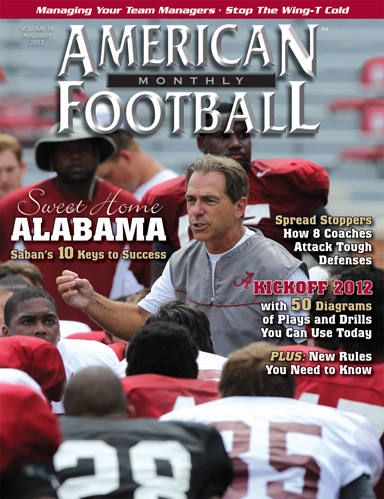Article CategoriesAFM Magazine
|
Looking Back at the Backside Tackleby: Karl LiedtkaAssistant Coach • Lebanon High School (PA) © More from this issue The most common term used by coaches and commentators in defending the option is “assignment football”. Being disciplined on defense and knowing your option responsibility is critical, but giving the option quarterback different and confusing fronts and reads is also crucial. Realizing that defenses will stunt, stem, and blitz defenders in an effort to confuse, offenses have to be prepared to make adjustments that give the defense something to think about. The pinch and scrape scheme, whether it is run from an odd or even front, presents some potentially dangerous reads. Running the inside zone to the right and reading the opposite end man on the line of scrimmage – if the quarterback pulls the ball in this situation and the unblocked linebacker fills – it is very likely that someone else may be calling the signals on the nex....The full article can only be seen by subscribers.
|
|
|||||||
| HOME |
MAGAZINE |
SUBSCRIBE | ONLINE COLUMNISTS | COACHING VIDEOS |
Copyright 2025, AmericanFootballMonthly.com
All Rights Reserved





